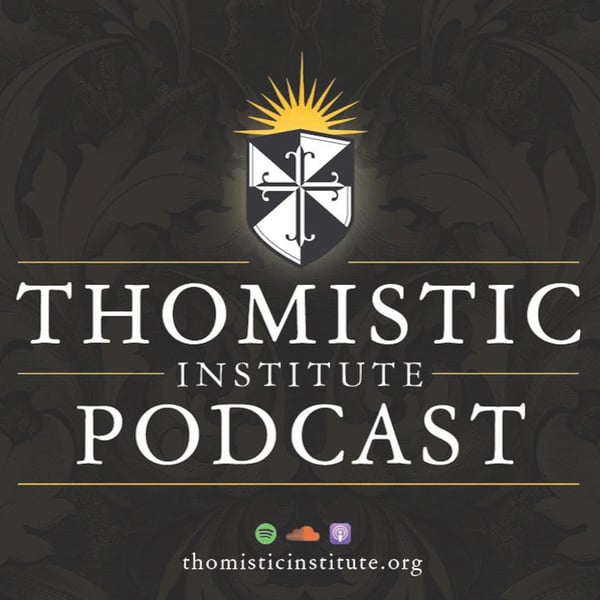Sacramental Architecture as Offering and Presence | Prof. Philip Bess
The Thomistic Institute
The Thomistic Institute
4.8 • 729 Ratings
🗓️ 29 December 2019
⏱️ 47 minutes
🧾️ Download transcript
Summary
This lecture was given at New York University on November 16, 2019.
The accompanying powerpoint presentation is available at tinyurl.com/qmvtem6.
For more events and info visit thomisticinstitute.org/events-1.
Prof. Philip Bess (University of Notre Dame) lectures widely, and is the author of numerous articles and three books: City Baseball Magic: Plain Talk and Uncommon Sense About Cities and Baseball Parks (Knothole, 1991); Inland Architecture: Subterranean Essays on Moral Order and Formal Order in Chicago (Interalia / Design, 2000); and Till We Have Built Jerusalem: Architecture, Urbanism, and the Sacred (ISI, 2006). He holds an undergraduate degree in philosophy from Whittier College, a graduate degree in church history from Harvard, and a graduate degree in architecture from the University of Virginia. In 2013-14 he was a William E. Simon Visiting Fellow in Religion and Public Life in Princeton University's James Madison Program in American Ideals and Institutions; in May 2015 he received the degree Doctor of Humane Letters honoris causa from The Dominican School of Philosophy and Theology in Berkeley, California; and he is a Fall 2019 Fellow of the Notre Dame Institute for Advanced Study.
Transcript
Click on a timestamp to play from that location
| 0:00.0 | Thank you. I guess I should make some disclaimers at the outset. I may touch upon Sacramento |
| 0:06.3 | Architecture, but not at length, but I would be happy to answer questions about Sacramento |
| 0:12.2 | Architecture as offering a presence and allude to it a little bit throughout. Also, I realize |
| 0:17.2 | listening to the introduction that I, if I write another book, I need a shorter second title. |
| 0:26.7 | Well, so good afternoon. |
| 0:28.8 | Thank you all for coming. |
| 0:29.7 | It's Saturday in Manhattan, and I want to begin with confession. |
| 0:34.2 | I am not an expert on Notre Dame de Paris. |
| 0:38.7 | And I must confess as well that I always experience a certain frisson |
| 0:43.2 | when I contemplate how Parisians mispronounced Notre Dame. |
| 1:01.1 | So apart from the basics of its Christian narrative, I can't speak with authority about the iconography of Notre Dame, its exterior ranks of biblical figures, the theology |
| 1:06.5 | of light it embodies, or its relationship to neoplatonist traditions of thought, Dionysius |
| 1:12.6 | the Iropagite, and medieval cults of the Virgin Mary. All things that I know, that I know, |
| 1:19.6 | primarily as hearsay, though Stephen's talk has reminded me of the many complex rumors associated |
| 1:25.6 | with Sandini, which I enjoyed being reminded of very much. |
| 1:29.3 | There are two things when I set out to actually write what I intended to write. |
| 1:34.3 | One of the issues was the, one of the topics was the purpose of sacred architecture, |
| 1:39.3 | and the other was the nature of beauty. |
| 1:42.3 | And actually I talked a little bit more later about the nature of beauty. |
| 1:46.7 | But the purpose of sacred architecture, I realized I didn't really get to. |
| 1:50.0 | So I wanted to read two things before I go into the main body of the text, which first has to do with the conviction that sacred architecture is always a response to the sacred, that in its |
| 2:03.7 | origins it is a response to the sacred, and it's a response to sacred presence, and it's a response |
... |
Please login to see the full transcript.
Disclaimer: The podcast and artwork embedded on this page are from The Thomistic Institute, and are the property of its owner and not affiliated with or endorsed by Tapesearch.
Generated transcripts are the property of The Thomistic Institute and are distributed freely under the Fair Use doctrine. Transcripts generated by Tapesearch are not guaranteed to be accurate.
Copyright © Tapesearch 2025.

